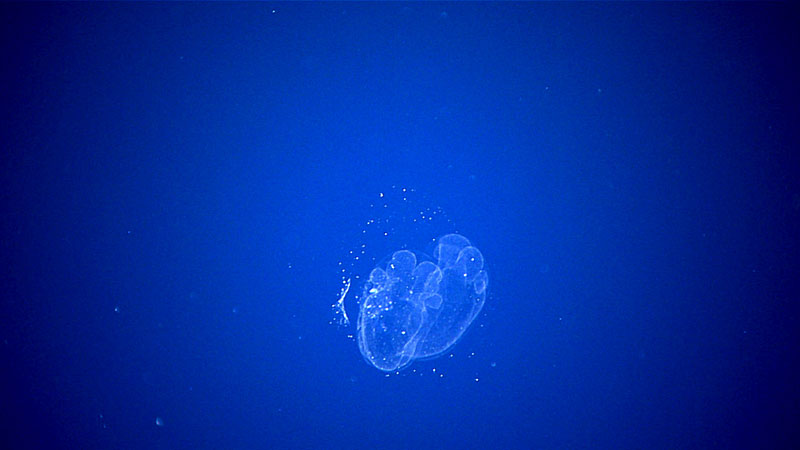This is a larvacean, or sea tadpole, “house.” The diffuse outer filter catches the larger particles that would be too big to fit in the larvacean’s mouth and protects the inner filter, which is used to strain food particles from the water. The larvacean lives nested inside this inner filter and produces a current by beating its tail. This current both keeps the house inflated and moves water through the filter of the house. The two-lobed structure of the inner filter and the bumpiness or sub-lobes suggest this may be a species of
Mesochordeus.
Download larger version (jpg, 1.1 MB).
